I’d love to say the 2022 Atlas Mountain Race was all a blur – 72 hours of amazing riding, wild experiences and jaw-dropping scenery, but the truth is it isn’t a blur.
I remember every agonising second of it – every bump, jolt and drop. Every metre climbed, every kilometre ridden and every kilocalorie consumed (or not, as the case came to be).
My race story begins the day before the race, on a street a few minutes' walk from the hotel.
At roughly 1:15pm, on the way to the supermarket to pick up some last-minute supplies I had, as my mother would say, a ‘funny turn’ – in plain English, I nearly fainted.
By mid-afternoon, it became clear this wasn’t dehydration. I was shivering in a 27°c room and my skin was on fire. I jumped in a hot shower in the hope of warming up, but instead that brought on stomach cramps that lasted through the night. Brilliant.
I was clearly ill, but I hoped it would just pass through me (literally), and I’d be fighting fit by the time the race started, or at worst a day later. Dear reader, I was not.
What is the Atlas Mountain Race?
The Atlas Mountain Race is an unsupported ultra-endurance bikepacking race through Morocco over a 1,167km route from Marrakesh to the Atlantic coast.
The race’s inaugural edition took place in 2020 with almost half of the 200 riders that entered dropping out before the finish.
After being postponed in 2021, Jordan Gibbons lined up for the 2022 edition aboard his Stanton Sherpa with high hopes for this challenging ride.
You can read more about his bike and two altogether different beasts in our separate look at three of the bikes from this year’s race.

I awoke the next morning feeling as if I had already finished the race. Accepting my fate, I resolved to start anyway.
We amassed at the start line and, soon, were riding out of Marrakech in a giant peloton, complete with rolling road closures courtesy of the gendarmerie royale.
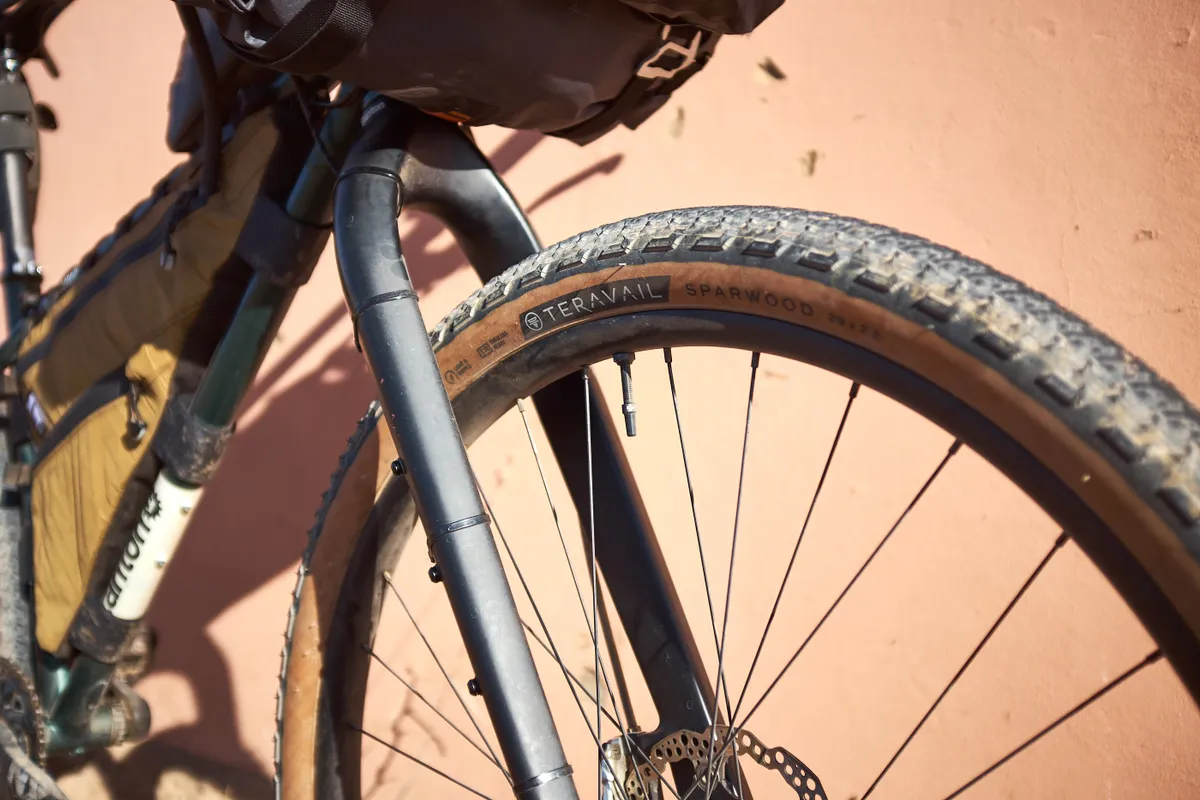
There was the promise that the opening kilometres would be calmer than the last edition, but we were quickly chipping along at 35kph. The Teravail Sparwoods I opted for rolled along nicely and as I listened to the pleasing whirr of treaded tyres upon the pavement, I felt happy with my choice.
The right bike for the day
The stretch to checkpoint 1 was marked out in the race manual as one of the toughest of the whole route: 126km with 3,600m of climbing.
That would be hard enough on the road but, as we approached the foothills near Marrakech, we’d barely climbed a few hundred metres and the off-roading proper had only just started.

The twin track began to wind its way away from the houses, through giant salt pits and up into the real mountains.
Gradually, the other riders dwindled away and the crushing reality of tackling a 30km climb with over 1,200m of elevation sank in.
Slowly clambering, riders soon split up and before long I was on my own. By this point, I was really hoping some of my sickness might have subsided, but it hadn’t.
I managed to force down a couple of Moroccan knock-off Nakd bars I’d stashed in my framebag while I sat in the shade, but that was my lot.
Remounting, I spotted another rider closing, and hoped they might catch me and we could chat for a while, but they never did.
The route rejoined the road and the final few kilometres meandered up tarmac switchbacks through a small town, where the local children would have given the Artful Dodger a run for his money.
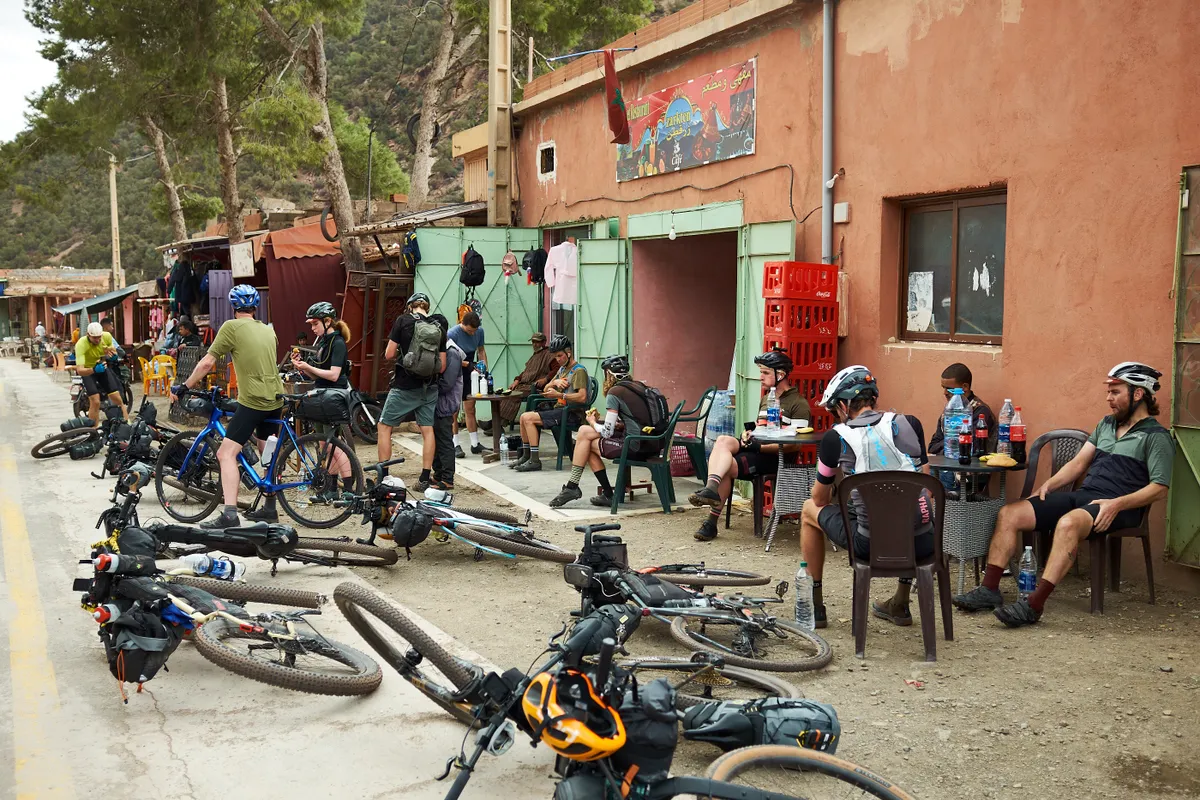
I passed a few riders already struggling with the heat or similar illnesses, before the top and a long 8km road descent into Zarkten, where other riders had amassed at a café.
Deciding that minutes quickly add up to hours, I spent just a few moments failing to eat before chugging a coke and jumping back on the road.
A few more kilometres of descending and it was time to start the climb proper for the day.

Although I was feeling rotten, I was delighted with my choice of bike. I’d opted for a Stanton Sherpa, with a rigid carbon fork, thinking it would enable me to rip the descents without compromising on the flats and climbs too much. Mercifully, it seemed to be paying off.
Suffering through a stormy stomach and skies
Tipping off-road once more, tarmac gave way to gravel and broken roads as the switchbacks sent us into a canyon and back out.
The road pitched up and down with alarming regularity and, while I struggled on the climbs due to a total lack of energy, I was managing to hold a decent average speed by railing the descents.

Progress was steady but slow, until the last few kilometres as the gradient and toils of the day began to add up. I gave up trying to pedal and began the slow pedestrian trudge towards the summit as the sun began to fade.
I snuck in some food, then violently deposited it back the way it came on the earth some two hairpins later.
That was when the storm arrived.
Lightning flashed, thunder cracked and the wind whipped sand into my eyes. I scrabbled around in my frame bag for my head torch, only for it to snag as I removed it, hurling the batteries into the darkness. Expletives echoed into the night.
I rooted around on my hands and knees until I found the little alkaline rascals and made for the top. I staggered over the summit into the vicious gale, only to face a 4km scramble down a deathly steep and loose goat track.
If nowhere else, the weight saving of the carbon fork was felt every few minutes here as I hauled my bike over boulders and across gaps. By the time it had turned into something rideable, I was delighted not to have broken both ankles.
Flash floods and fudged flashlights
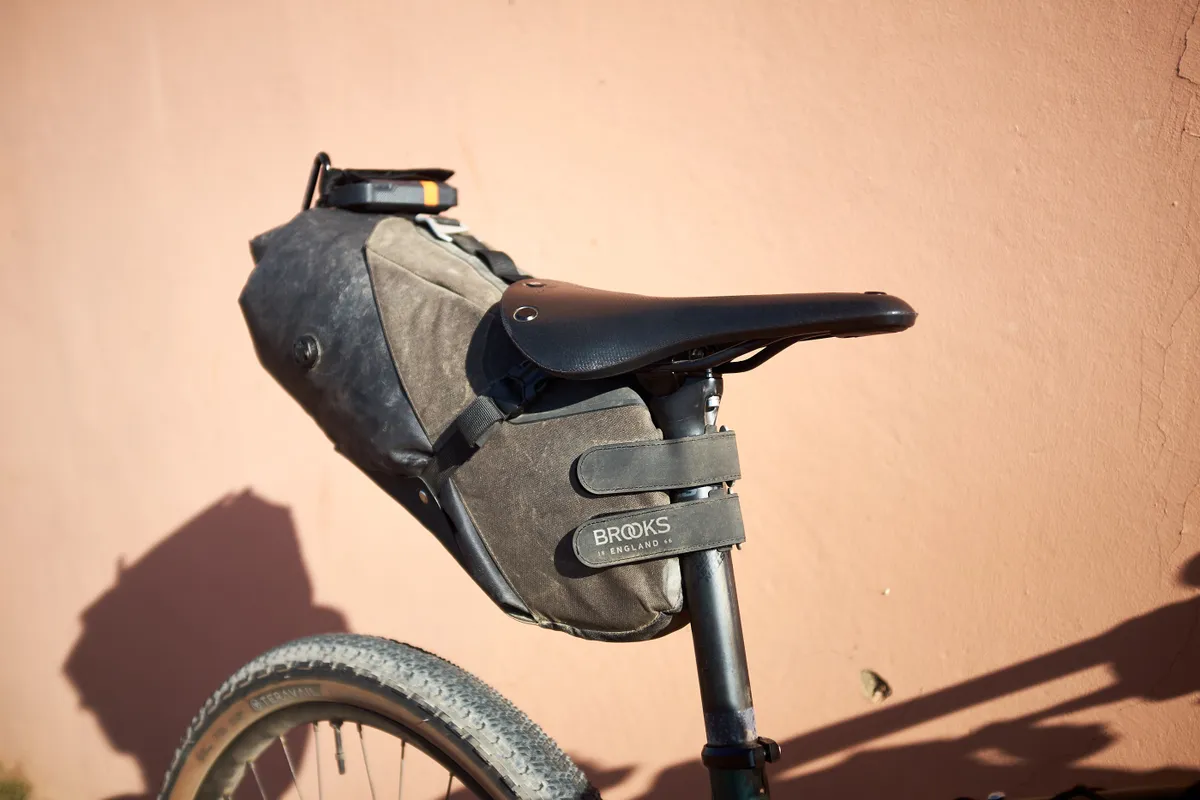
Around 10pm, soaked through and cold, I stumbled into CP1. The organiser, Nelson Trees, was slumped on a sofa. I did the honourable thing and called him a swine, then went off in search of food, shelter and rest.
After successfully eating two spoonfuls of soup, one slice of bread and half a slice of potato, I gave up and bedded down for the night.
After five hours of zero sleep because someone nearby evidently had a sleeping mat made from old crisp packets, I packed my kit and ventured out into the darkness once more.

The route profile seemed to suggest a few little humps but an overall rolling descent for the next 60km or so. That was plainly rubbish.
The route did descend, briefly, before climbing onto a rocky plateau after a dawn raid through Anmiter’s town-centre singletrack.
With the ‘big’ climb of the day despatched, I began a long, technical, and rocky descent, where my bike choice came into its own.
I flew down the twin track, the slack front end giving me incredible confidence at speed. I whooped and hollered as I sped down the track picking lines and, by the bottom, I’d overtaken three other riders who had passed me on the climbs that morning.
A few more kilometres across the valley and I came across an unlucky rider who had lost his bike and other possessions in a flash flood during the night.
As I arrived, he was scooping mud out of his backpack, which had just been found thanks to the Spot tracker still clipped to it. He was surprisingly chipper, considering, and only his bloodshot eyes gave away the strain of the last 12 hours.
I bade him farewell, fully aware a long average 4 per cent climb lay ahead and began the slow grind up the riverbed.
Mud clung to my tyres, which tried their best, but eventually, I began to spin and sink. As a rider on heavily treaded tyres glided past me, I wished I’d fitted something either that bit fatter or knobblier.
I ate a packet of jelly beans (the only thing I could stomach) and plodded on. After a few kilometres, I started to wonder when the climb would begin and looked at my GPS unit, only to discover this was the climb. I laughed, lest I cry, and pushed on some more.
When I finally crawled out of the valley, it was gone lunchtime and I’d barely covered 70km in the seven hours I’d been riding.
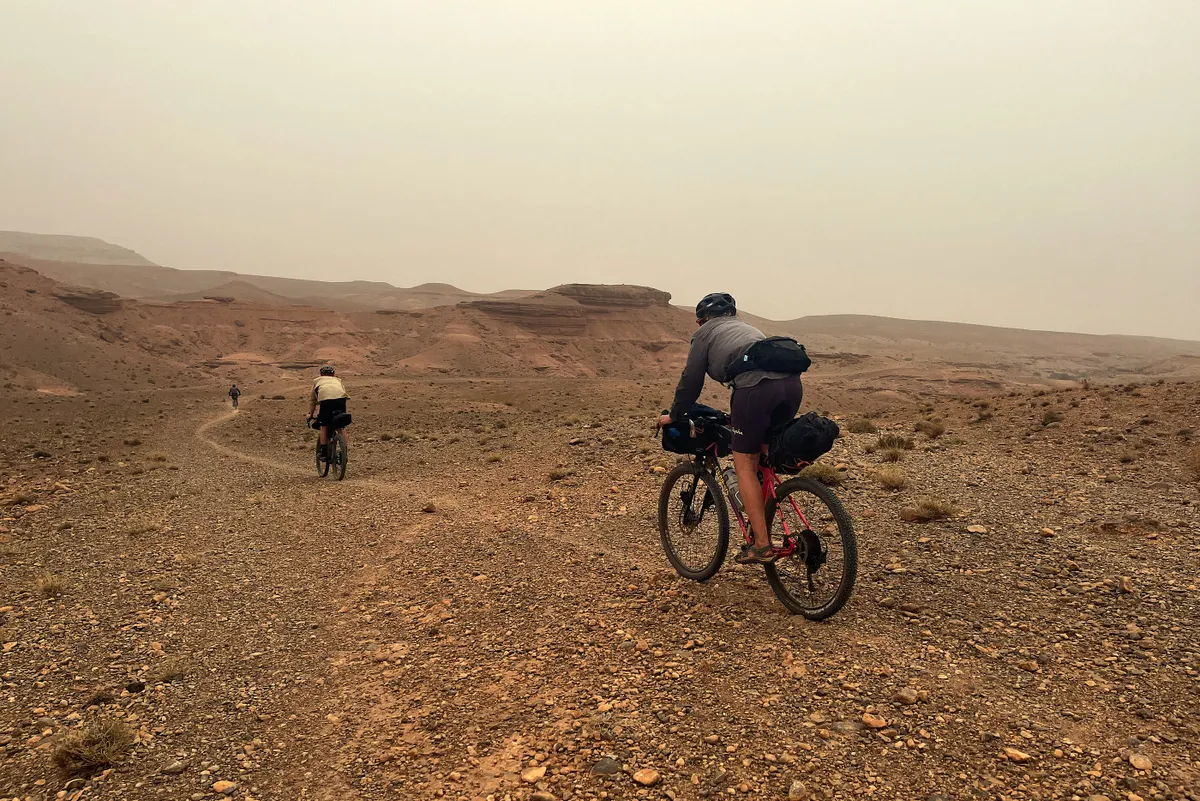
Still, at least there was a road descent down to Ghassate – except the headwind was so vicious that pedalling with all my might downhill only achieved 20kph. I crawled to the café, fully believing I would scratch shortly.
I found some riding buddies (Carl, Jade and Michael), astonished they weren’t that far ahead of me and wallowed for some time. They would have none of it, so I ate an omelette, which miraculously stayed down, and continued apace.
We rode together out of Ghassate, buoyed by my new-found ability to consume.
A momentary high point
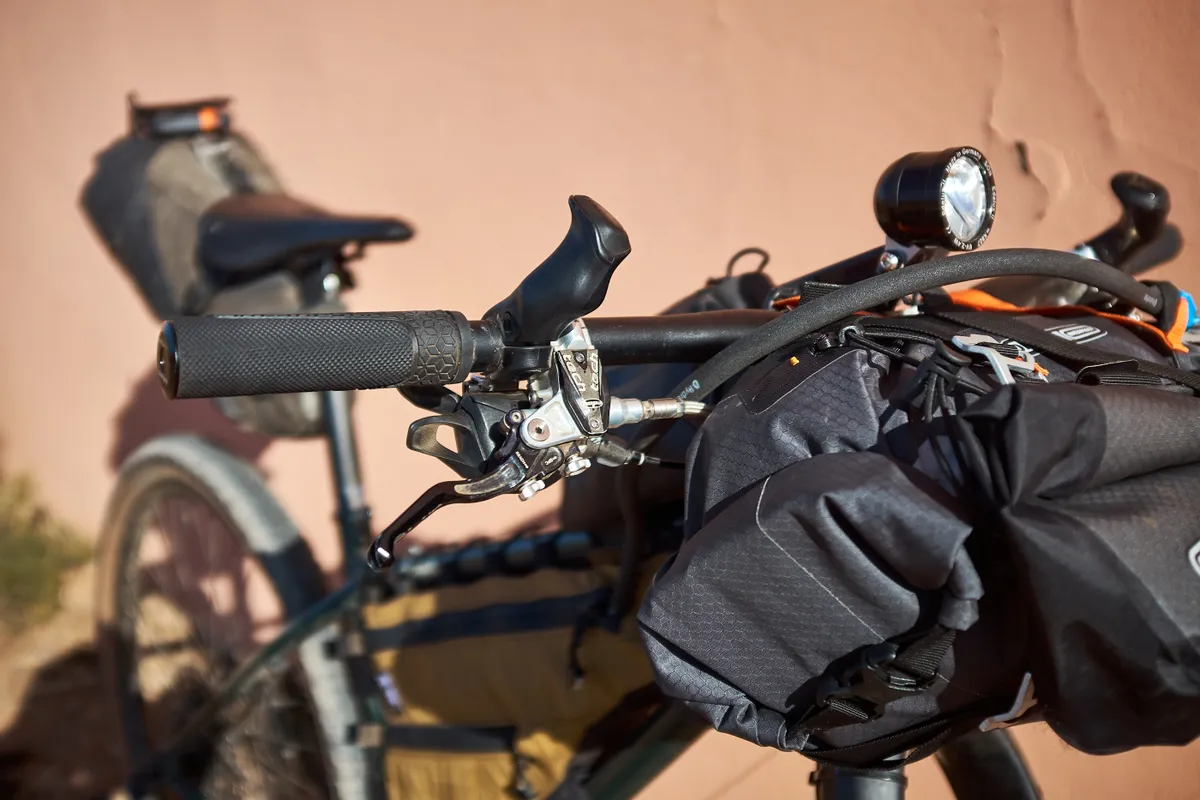
Kilometre after kilometre ticked by. There was a headwind and I wished for some aero bars momentarily, but did my best to tuck in by nestling into my SQ Labs bar ends.
Eventually, we reached the end of the first route file – a huge milestone mentally.
At this point, my Wahoo computer mysteriously lost file 2/6. I cursed it and was forced to deauthorise and reauthorise my Komoot account at the side of the trail. Were it not for the miracle of 4G, I’d have been stuffed.
By this time, my friends were long gone, so I marched on alone through Toundoute and onto the next plateau, where I met Ben. He was doing the event singlespeed and at a surprising pace – presumably, so he could hurry home for two replacement kneecaps.
We’d been warned the next section crossed a number of dry river beds, which slowed our pace down to a staccato rhythm.
I caught Jade and Carl, finally finding a rhythm as the twin-track became a flowing single track and we pushed on to Imassine.

Finally feeling good and with the stomach bug possibly behind, I fell over in a tragic fashion after failing to unclip. I stuck out my hand (rookie error) and the meaty part of my thumb landed on a rock.
Thud. Numbness. Instant rigor. I prodded it. Sore but not agony, so probably not broken but painful.
In Imassine, I managed once more to keep down an omelette, with an Ibuprofen chaser, and prepared for the next stretch.
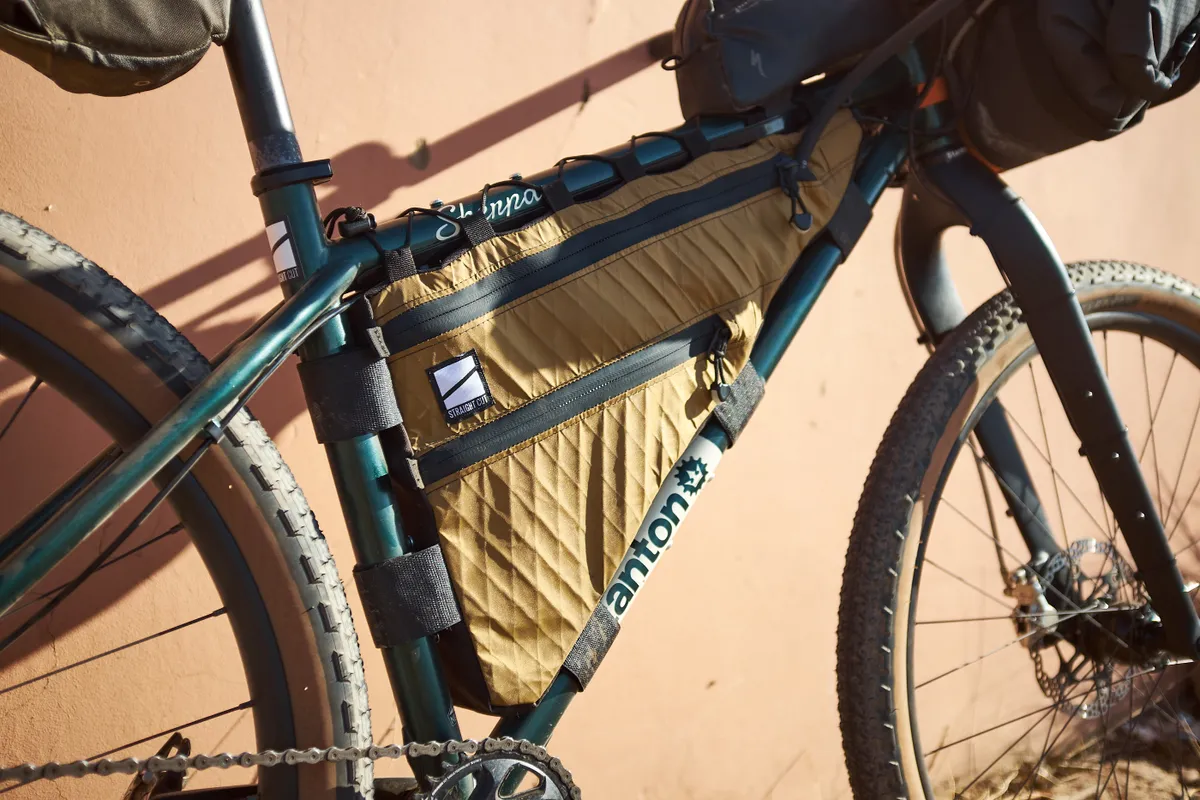
The stretch from Imassine to Afra was highlighted in the route as being particularly perilous because there was nothing for 100km – no shops, no food, no shelter, no water. If you needed it, you must carry it. I stocked up on food and water, and set off into the night once more.
After a few more kilometres, the ‘big’ river crossing presented itself. The front runners had been prevented from crossing the night before, such was its treachery, but 12 hours later the waters had receded.
I slowly made my way across, and as I messed about with my shoes on the other side, I saw the bobbing head torches of my friends once more. I paused for a moment while they crossed, and then we rode into the night.
Dynamo regrets
After another three hours, I was spent and found a spot to snooze. Then, after two minutes, decided it was rubbish and rode on. Ten minutes later, I glanced down to see my frame bag open, phone nowhere to be seen. I turned the air blue, then turned myself around.
I rode back slowly, scanning the trail with my lights in the dark. Nothing. I fumed, ranted, raved and raged. I began to run every scenario through my head about what a nightmare the next few days would be without a phone, then put my hands on my hips for one final huff. My phone was in my back pocket.
I tutted the world’s loudest tut, followed by the deepest sigh of relief, then found a spot for the night.
Within moments my kit was out, and I was sliding into bed. Big all-in-one tailpacks have their advantages, but a holster-style saddlebag paired with a drybag is the way to go if you want to get your kit out in a hurry.
My alarm bleeped into life at 5am, and I ignored it for some time under Orion’s watchful gaze.
Packing up, I began the next big climb and this was the only time my dynamo front light was annoying.
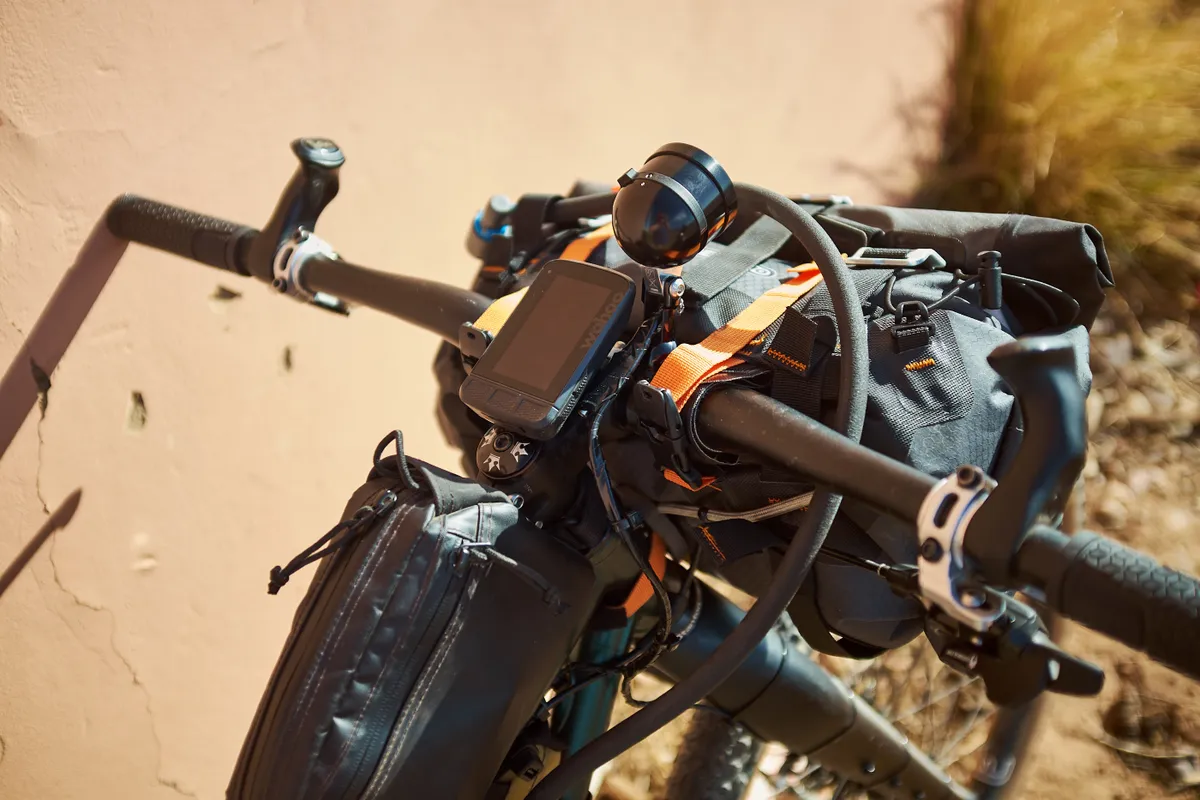
While it provided enough light when climbing at low speeds, when I had to dismount to ford sudden river crossings – and thus, the dynamo stopped producing power – it was hard to make out the track.
Having it mounted to the bars also meant that, as my front wheel pitched down, so did the beam. A proper helmet-mounted light, rather than my headtorch, would have ensured swifter progress.
Two hours or so later, as dawn finally broke, I crested the summit before descending to the valley.

A large climb followed and, after stopping briefly to return my breakfast to the earth clear in the knowledge the stomach bug was clinging on, I ran out of all energy on the next ramp.
Suddenly, I recalled buying some Pringles in a mad panic the night before and promptly wolfed down the lot. Then I caught sight of myself, covered in crisp detritus, baking in the sun and had a small but private sob as Cat Power echoed through my headphones.
Annoyingly, as I sat in my self-pity, I saw Michael riding up the hill towards me, his face a cheery rictus. He did what all good friends do and laughed at my predicament, so I saddled up and we rode on towards the big climb for a few hours.
Soon, though, he departed and I began the 16km slog to the peak. Much of it was a push, not because it couldn’t be ridden but, by now, I was worrying about the amount of water I had and was terrified of breaking a sweat.
A jolly Scot with knee troubles joined me as we made for the peak, where we were overtaken by a jubilant American we knew only as Buffalo Bill.
Some two hours later and 1,000m higher, the peak was behind us, but the climbing wasn’t. The route profile said it should descend, but the descent was missing in action.
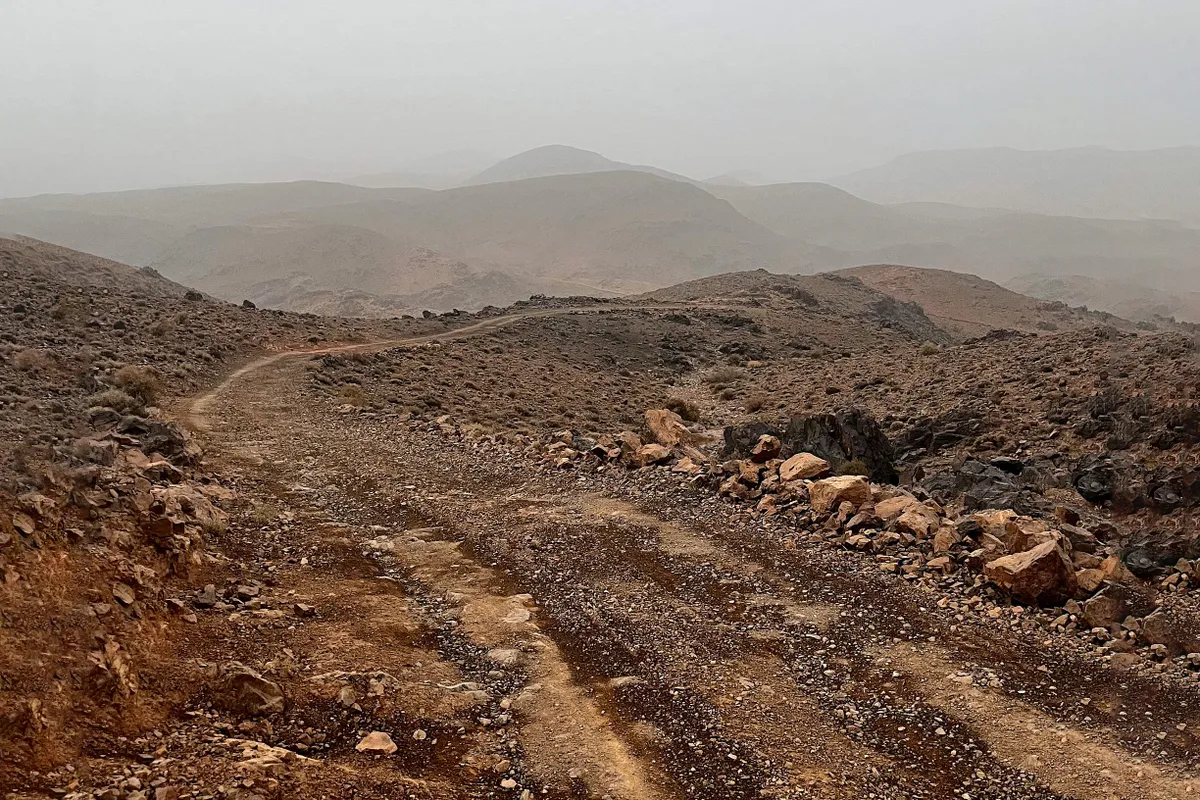
Four kilometres more and we still seemed to be climbing. Every corner we turned was another inexplicable ramp until eventually, the gods had mercy on our souls and we began the fast road down. Except the road was awful.
The surface was loose and rocky, with a huge leap into space on one side and razor-sharp rocks on the other. The steep gradient meant that unless I wanted to boil my brake fluid, I had to just release the brakes and hold on for dear life as the surface pitched me one way then the next at 50kph.
As I thundered down it, my damaged thumb begged for mercy, and I coveted my neighbour’s Fox 32s.
Soon, though, it smoothed out and we were ripping along, houses zooming past in an instant.
Then suddenly, like a mirage, the road emerged. We hopped on the tarmac, knowing the next town was in sight.

Crawling into Afra, I collapsed in the shade among a pile of equally dishevelled riders. Sat a few feet away was James who – and I’m sorry if you’re reading this James – looked how I felt. He too had barely eaten since the race began.
We shared bilious war stories and agreed to crawl on together and scratch as a pair if things didn’t improve. They did not.
As the temperature soared, our pace crumbled. It took us more than four hours of stop-start riding, dashing behind bushes and trees to both project and eject, to manage 30-odd kilometres of flat riding into the next town.
We peeled off the route and headed to Agdz to find somewhere for the night. “We’ll scratch in the morning if we don’t feel like going on,” we agreed.
Even though we didn’t admit it at that point, we knew our races were over, just shy of the 400km mark.
